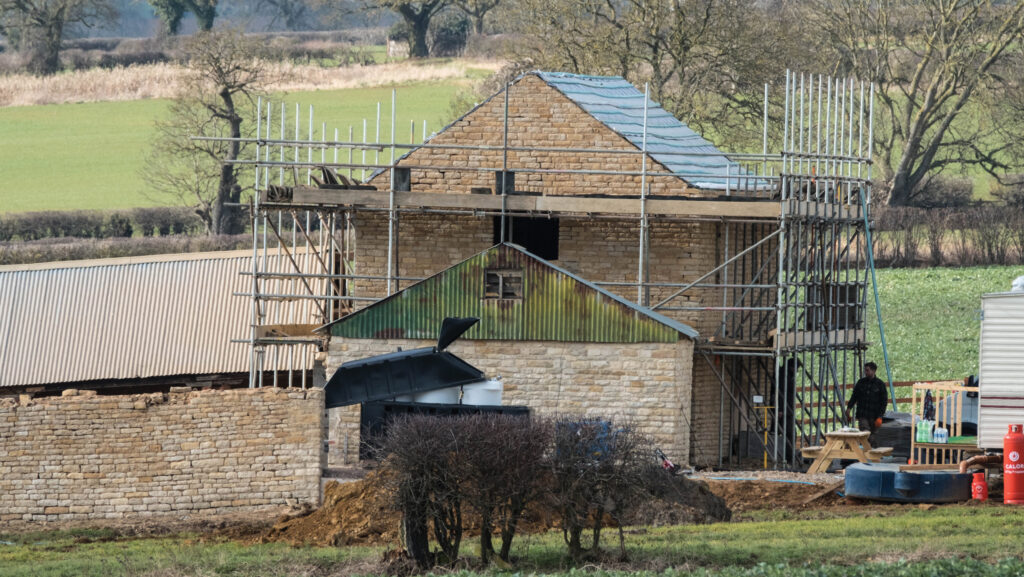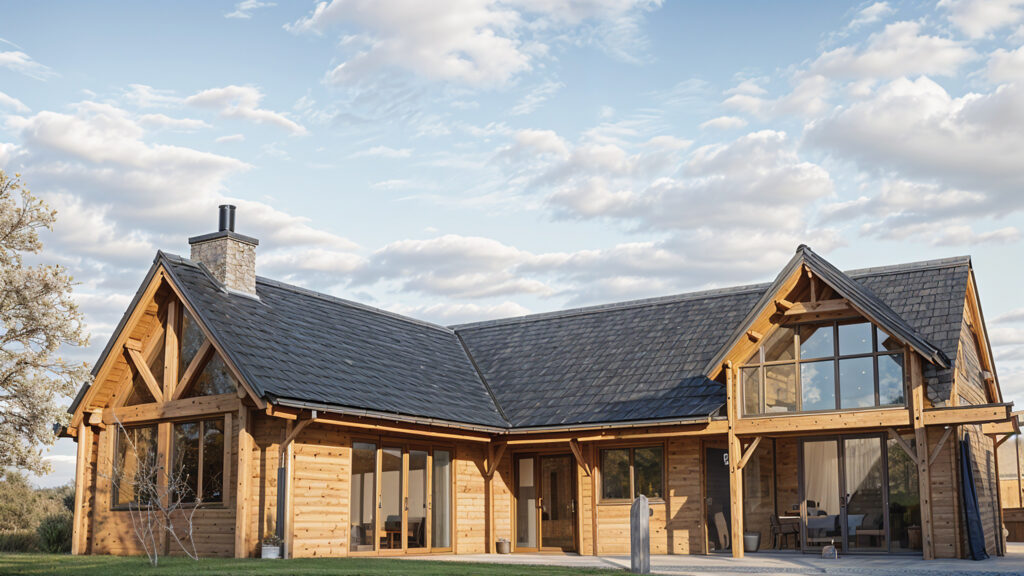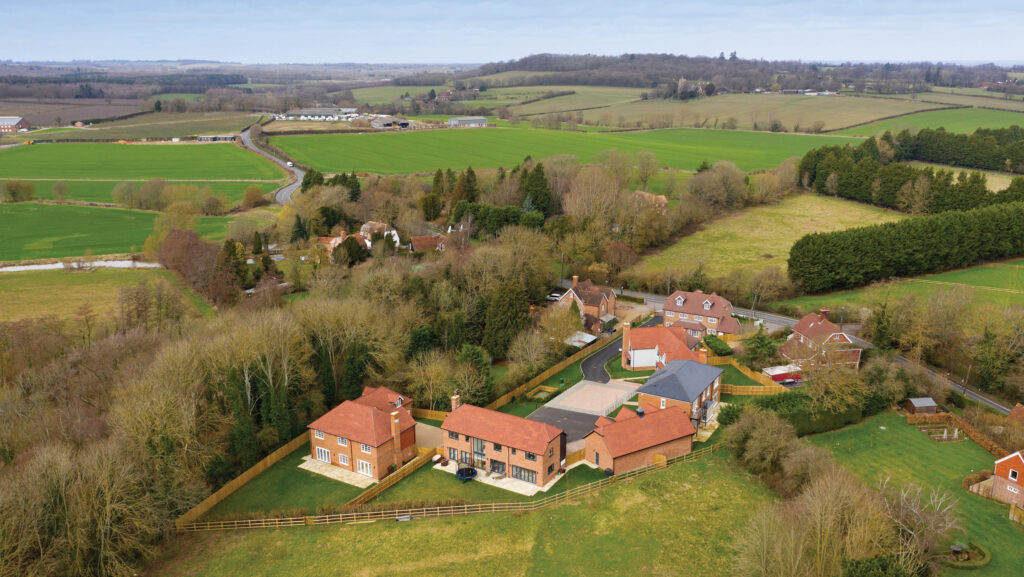Farm accommodation – the planning options and process
 © Tim Scrivener
© Tim Scrivener Even as building costs escalate, it is still cheaper, and in many cases more suitable, for farmers to construct a new-build house on their land or convert a redundant barn than buy an existing dwelling.
However, the process of securing planning permission can be more complex than a standard application.
Recent and proposed changes to planning guidance on rural workers’ dwellings are altering the landscape too.
With several new factors to consider when making an application for a rural worker’s dwelling, chartered surveyor Vicky Price of Berrys provides some pointers for the process in England and Wales.
See also: What’s new with Class Q permitted development rights
Changes to Class Q
In England, from May 2025 the maximum total floor space permitted for an individual dwelling under Class Q permitted development rights (PDRs) will reduce significantly, from 485sq m to 150sq m.
Class Q rights allow conversion of agricultural buildings into dwellings.
This does not involve a full planning application, but councils must be notified of the intended work and give prior approval for it. Councils must respond to these applications within 56 days.
Meanwhile, in Wales new planning guidance will entitle small-scale horticultural enterprises to make the case for a dwelling on-site.
New build v Class Q
“In England, we always consider the options for Class Q before going down the rural workers’ dwelling route because it is a much simpler process,” says Vicky.
“That way, the applicant doesn’t need to make a business case or justify their reasons, as they have to when applying for consent for a new build, therefore Class Q can offer a much quicker result.”
Buildings for conversion must be structurally sound and there are restrictions as to what works can be carried out.

© Berrys
Depending on the scale of the property needed, changes coming into force from 21 May 2025 may influence the decision.
These changes allow for conversions to up to 10 houses with a combined floor area of 1,000sq m, but the total maximum floor space for a single dwelling is being reduced to 150sq m.
This could typically provide a three-bedroom property, in line with most councils’ limits on rural workers’ dwellings, says Vicky.
“If there is a barn which is suitable for conversion but doesn’t meet the criteria for Class Q in England, or you are based in Wales where these rights don’t apply, conversion may still be an option as many local authorities in England and Wales have policies which allow this, but it would require a full planning application.”
Anyone looking to use PDRs to build something larger than 150sq m now has only a short timeframe to get their prior notification in to their planning authority before the cut-off date of 20 May this year.
How to get planning permission for a rural worker’s dwelling?
Outside the permitted development route, the latest national government guidance for planning authorities is broadly supportive of secondary dwellings, especially where this eases succession, says Vicky.
Applicants for a rural worker’s dwelling need to satisfy the functional need test that a dwelling is essential for the proper functioning of the farm.
There is also a financial test, to establish whether the business is sustainable, and the planning authority will want to be satisfied that there is no alternative option of buying a property on the local market.
Make a strong case
Make the first attempt at applying for planning permission the best, Vicky advises.
“Make sure that the financial case is in there, that you have your functional need justified, and reasons why you have discounted a Class Q conversion or buying a property locally.
“Do a comprehensive search of the local property market as you don’t want to be caught out if the authority’s own search identifies a house for sale down the road.
“Permitted development rights cannot be used in Areas of Outstanding Natural Beauty, now known as National Landscapes, or in National Parks or other protected areas.”
“Even if there is a property on the market, it might be that it is just too expensive – consideration has to be given [by the planning authority] to the wage of the person who will live in the house and the affordability of purchasing a property on the open market.”
Getting the right advice is important as a rural worker’s dwelling application is a specialist application, and consent is very much given on its merits and on a case-by-case basis.
Engaging a consultant to take charge of the process can improve the chances of success, but they must be honest about the prospects, says Vicky.
“Those with a high success rate for these applications will be frank in their assessment of whether or not there is any hope of getting permission.
“Really go into detail in the business plan, delve into the needs of the business.”
A recent application that Berrys has been working on is for a dairy sheep start-up.
This required forward financial projections for three years and evidence of genuine need.
“As it is a new business, we must seek permission for temporary accommodation for three years to prove that it is financially viable – the temporary consent will be for a timber cabin that can be removed,” says Vicky.
“The client can then build up evidence across a three-year period that the business is viable, and after those three years to go back to the authority to apply for a permanent dwelling.”
Are there different rules for a farmhouse and a farmworker’s dwelling?
No, the same requirements apply to every application submitted for a dwelling on a farm, under the rural worker’s dwelling process, with each considered on a case-by-case basis.
Enabling farming succession is something that planning authorities should take account of.
Can a security case be made?
For agricultural enterprises with expensive machinery or with livestock, a need for someone to be on-site is easily justifiable, from both security and husbandry perspectives.
Also, it is accepted that farmers and growers often work much longer hours outside of normal working hours and are, therefore, penalised by not living on-site.
This is an important justification for living on-site, which should be highlighted alongside matters such as security and dealing with emergencies in an efficient manner, advises Vicky.
Are there grants to help farmers with the planning process?
In Wales, businesses that are registered with Farming Connect can apply for a part-funded business plan which can be used as part of the process.
Although this doesn’t cover the functional need element of a rural worker’s dwelling application, it does cover accounts analysis and preparation of cashflows, which are needed when submitting an application.
In England, the Future Farming Resilience Fund supports farmers with a financial review, but this scheme closes in March.
Shortfalls in rural housing targets could work in an applicant’s favour

© Michael Harris/Alamy Stock Photo
Many planning authorities are not building enough dwellings to meet higher government housing targets set in December 2024.
This creates opportunities for new housing development on land that may have once been regarded unfavourably for housing, but may now be supported.
This includes small sites where it might then be suitable to use one of the resulting houses for a farmworker, says Vicky Price of Berrys
As a result, farmers who have been unable to make the justification for a rural worker’s dwelling should consider whether they have a piece of land on the edge of a town or village that may be suitable for housing development.
Wales supports homes for new horticulture businesses

© Adobe Stock
The Welsh government has recently published a Cabinet statement that throws support behind the development of new horticultural businesses and paves the way for proposed updates to planning policy.
“While it is widely accepted that on-site accommodation is needed on a livestock farm for animal welfare reasons, it has been more challenging in many areas to evidence need for workers to be on-site for horticultural production,” says Vicky Price of Berrys.
This new guidance emphasises the importance to new and small-scale horticulture businesses of having a home on-site due to unsociable working hours and benefits to crop yields from round-the-clock care.
Scotland’s planning framework for rural worker dwellings
Scotland’s new national planning framework, NPF4, states that development proposals for new rural homes linked to farmer retirement and succession should be supported by planning authorities.
The framework also backs housing development to “support the sustainable management of a viable rural business” and the worker needs to live at or near the business, says Ian Austin, of Scottish rural surveyor and consultant, Davidson & Robertson.
“Farmers previously had to convert older or historic buildings they already had on the farm if they needed a dwelling for retirement, but NPF4 opens up the potential for new-builds for retirement and reaffirms the needs assessment for new-builds for agricultural works.”
Ian anticipates that Section 75 legal agreements – a voluntary agreement between the landowner and the council that seeks to permanently restrict or regulate the use of the land affected by the planning permission – will continue to be used by the planning authority in many cases.
However, permission for general open market housing on farmland is harder to secure, as NPF4 has a presumption against greenfield development.
Permitted development in Scotland
Permitted development rights also apply to conversion of agricultural and forestry buildings in Scotland. As in England and Wales these must go through a “prior notification” process.
However, in Scotland the planning authority has 28 days to confirm whether or not prior approval is required.
“If those 28 days pass with no response from the planning authority then the conversion can proceed.
“But if development commences before notifying the planning authority, or before the 28 days have passed, the authority will likely insist on a full planning application,” says Ian.
Conversions are limited to up to five dwellings per holding, either houses or flats, and each cannot have more than 150sq m of total floor space.
